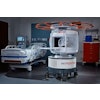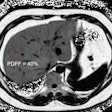Monday, November 28 | 3:50 p.m.-4:00 p.m. | SSE17-06 | Room N228
To overcome the limitations of functional MRI (fMRI), a group of researchers is developing an atlas to significantly enhance brain imaging and other related fMRI applications.Functional MRI has been chronicled in dozens of papers for analyzing brain function and dysfunction, but the researchers maintain that the modality's lack of quantitation and direct comparison with control data are serious drawbacks. In addition, current atlases are "low-resolution, noninteractive, and semiquantitative and therefore are never used," they wrote
To address the situation, they obtained 152 high-resolution fMR images of normal brains from the Montreal Neurological Institute to create an atlas that maps standard cortical regions of the brain within a resolution of 1 mm. Control subject and patient datasets are then segmented for side-by-side comparisons to evaluate activation and other patterns in the brain.
"To quantitate the activation of a patient, the brain must be segmented into anatomic areas so that the same data can be compared in control patients," Dr. Wendell Gibby, an adjunct professor of radiology at the University of California, San Diego, told AuntMinnie.com. "Having a high-resolution, interactive, quantitative brain atlas that we warp to fit the patient and run inside a PACS improves accuracy and speed of reading fMRI studies. It also allows the fMRI data analysis to be quantitative versus qualitative. It is a big step toward routine utilization of fMRI in clinical practice."
Gibby and colleagues plan to make the atlas available online soon at GlobalRad.org.


.fFmgij6Hin.png?auto=compress%2Cformat&fit=crop&h=100&q=70&w=100)





.fFmgij6Hin.png?auto=compress%2Cformat&fit=crop&h=167&q=70&w=250)











